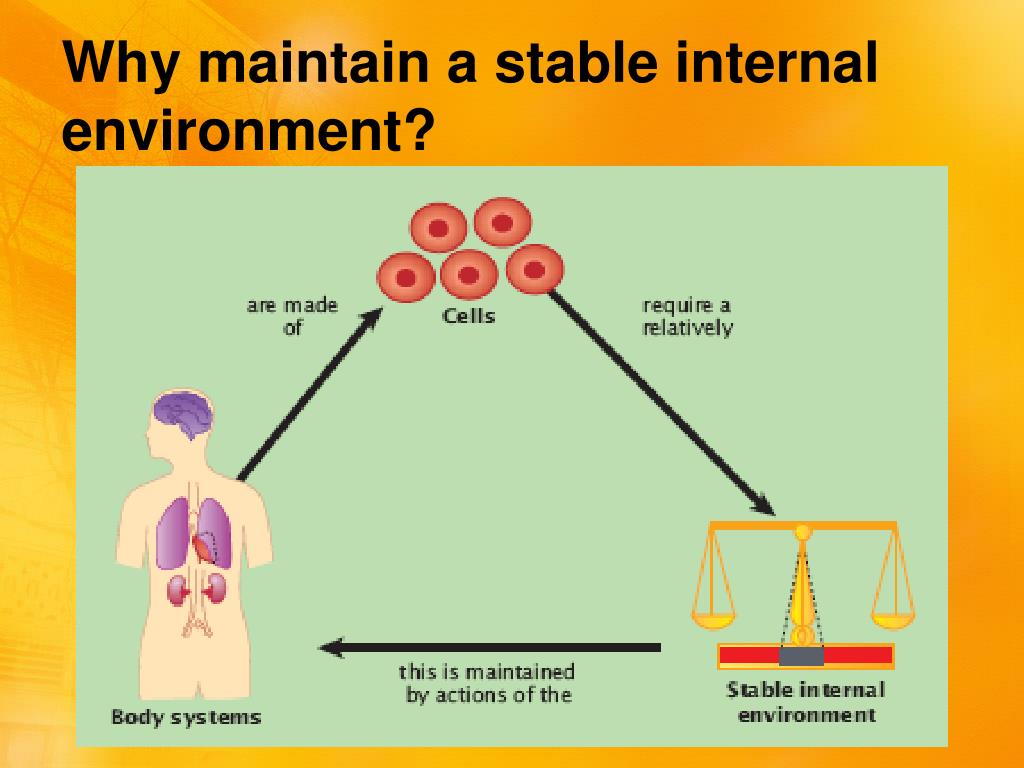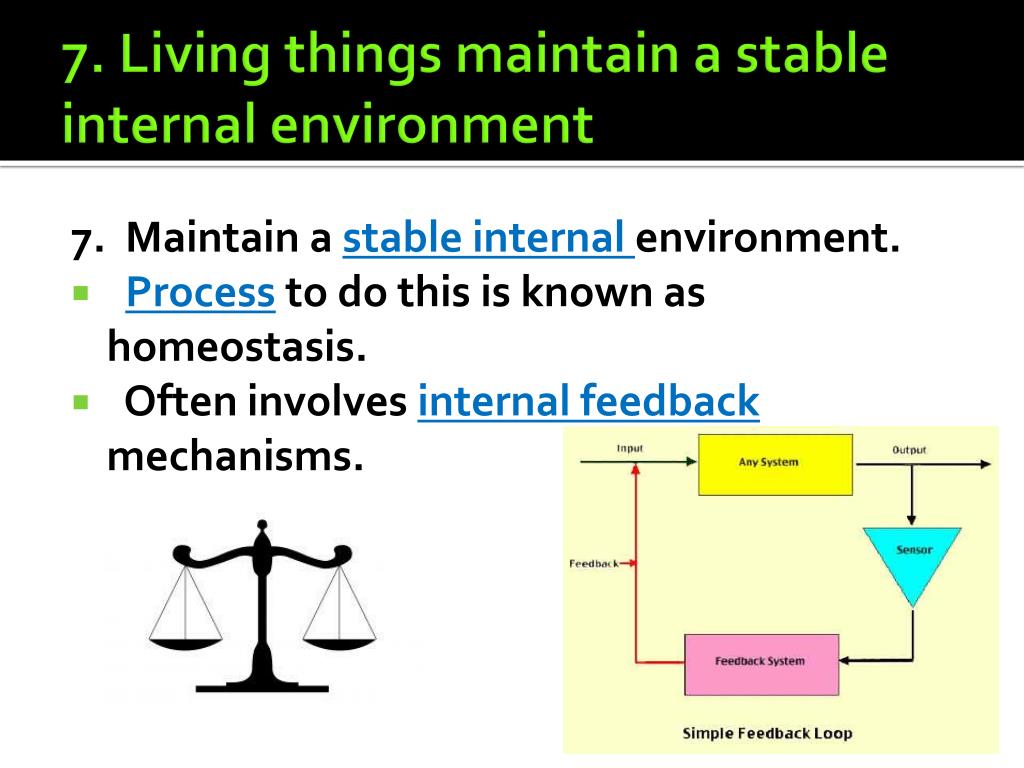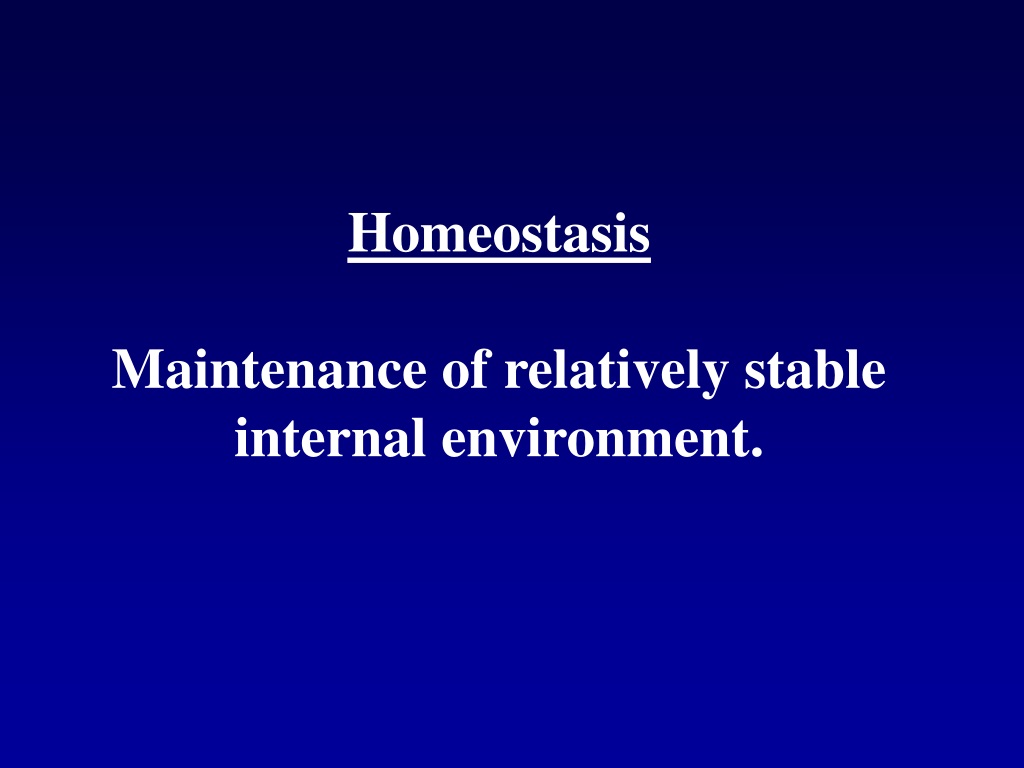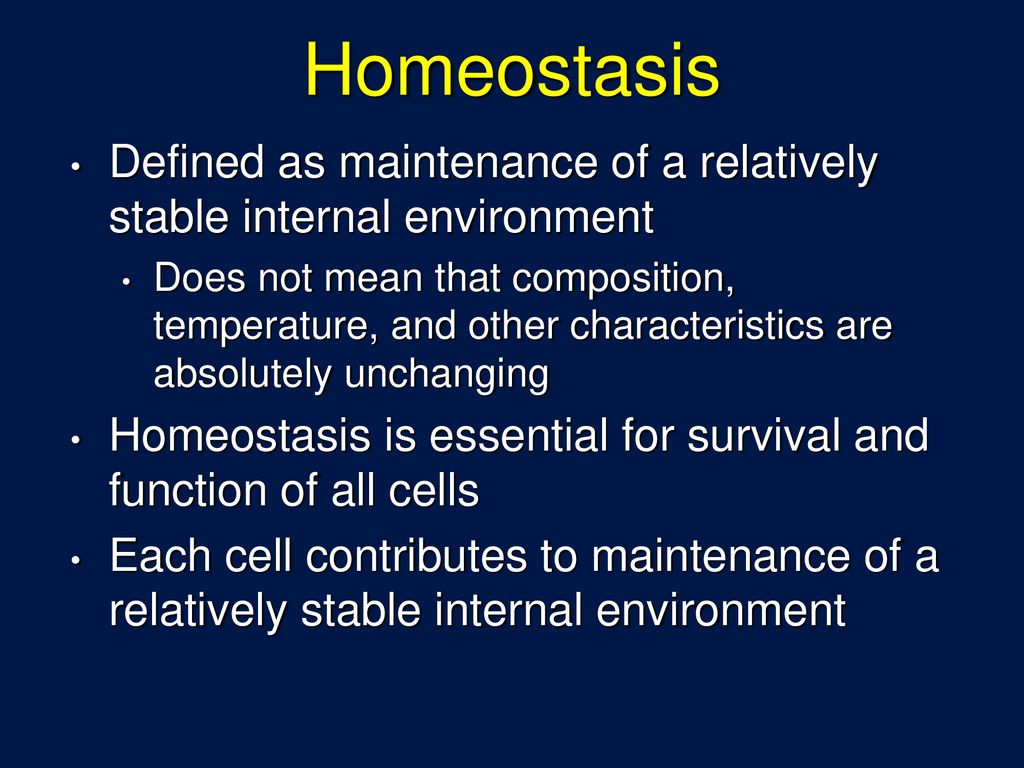The Maintenance Of A Relatively Stable Internal Environment Is Called

The human body, a marvel of biological engineering, relentlessly strives for equilibrium. This intricate dance of life, often taken for granted, ensures that internal conditions remain within a narrow, life-sustaining range. Disruptions to this balance can have profound, even fatal, consequences, highlighting the critical importance of understanding and maintaining this vital internal stability.
This article delves into the concept of homeostasis, the maintenance of a relatively stable internal environment. We will explore its mechanisms, the factors that influence it, and the implications of its disruption. Understanding homeostasis is fundamental to comprehending human health and disease.
Defining Homeostasis: The Body's Balancing Act
At its core, homeostasis is the body's ability to regulate its internal environment despite external fluctuations. This regulation encompasses a wide array of physiological parameters. These parameters include temperature, pH, blood glucose levels, fluid balance, and blood pressure.
French physiologist Claude Bernard first introduced the concept of a stable internal environment in the mid-19th century. He described it as the "milieu intérieur," emphasizing the constant conditions necessary for the survival of cells and tissues. Later, Walter Cannon coined the term "homeostasis" to describe the dynamic processes that maintain this stability.
Key Components of Homeostatic Control
Homeostatic control mechanisms typically involve three key components. These are a receptor, a control center, and an effector. Each component plays a crucial role in detecting and responding to changes in the internal environment.
Receptors detect changes in the internal environment and send signals to the control center. The control center, often the brain or endocrine gland, processes this information. Then, the control center initiates a response via the effector.
The effector carries out the necessary adjustments to restore balance. These adjustments can be physiological, such as sweating to cool down, or behavioral, such as seeking shelter from the cold.
Mechanisms of Homeostasis: A Symphony of Systems
Multiple organ systems contribute to maintaining homeostasis. The nervous system, endocrine system, and immune system are particularly critical. These systems work in concert to detect and respond to internal and external challenges.
The nervous system provides rapid communication and control. The endocrine system uses hormones for slower, more sustained regulation. The immune system protects the body from pathogens and helps maintain tissue integrity.
Temperature regulation, for example, involves complex interactions between these systems. When body temperature rises, the nervous system triggers sweating. Blood vessels near the skin dilate to release heat. The endocrine system may also adjust metabolic rate to reduce heat production.
Another critical example is blood glucose regulation. After a meal, blood glucose levels rise. This triggers the release of insulin from the pancreas, which helps glucose enter cells for energy or storage. When blood glucose levels fall, the pancreas releases glucagon, which stimulates the liver to release stored glucose.
Disruptions of Homeostasis: When Balance Fails
When homeostatic mechanisms fail, disease and dysfunction can result. Chronic diseases often stem from long-term disruptions in homeostasis. These diseases can significantly impact quality of life.
Diabetes, for instance, is characterized by impaired blood glucose regulation. This can lead to a range of complications, including heart disease, kidney failure, and nerve damage. Hypertension, or high blood pressure, is another example of a homeostatic imbalance. It increases the risk of stroke, heart attack, and kidney disease.
External factors, such as stress, poor diet, and environmental toxins, can also disrupt homeostasis. These factors can overwhelm the body's regulatory mechanisms. They can contribute to the development of various health problems.
"The maintenance of a stable internal environment is essential for optimal health and well-being. Understanding the principles of homeostasis can empower individuals to make lifestyle choices that support their body's natural regulatory processes." - Dr. Anya Sharma, Endocrinologist
Factors Influencing Homeostasis: A Delicate Interplay
Numerous factors can influence the body's ability to maintain homeostasis. These factors range from genetic predispositions to lifestyle choices. They all contribute to the overall stability of the internal environment.
Genetics play a role in determining an individual's susceptibility to certain diseases that disrupt homeostasis. Lifestyle factors, such as diet, exercise, and sleep, have a profound impact. Furthermore, chronic stress can negatively affect hormonal balance and immune function.
Age is another critical factor. As we age, the body's regulatory mechanisms become less efficient. This makes older adults more vulnerable to homeostatic imbalances. Moreover, environmental factors, such as exposure to pollutants and toxins, can also disrupt homeostasis and increase the risk of disease.
Maintaining Homeostasis: A Proactive Approach
Adopting a proactive approach to health and wellness can significantly support homeostasis. This includes making informed lifestyle choices that promote balance. It also entails addressing potential stressors and environmental factors that can disrupt the internal environment.
A healthy diet, regular exercise, and adequate sleep are essential for maintaining homeostasis. Managing stress through relaxation techniques and mindfulness practices is also crucial. Avoiding exposure to toxins and pollutants is equally important for preserving internal stability. Regular medical check-ups can help detect and address potential homeostatic imbalances early on.
Research continues to shed light on the intricate mechanisms of homeostasis. This research aims to develop new strategies for preventing and treating diseases that disrupt internal balance. Understanding homeostasis empowers individuals and healthcare professionals alike to work together toward promoting optimal health and well-being.
The Future of Homeostasis Research
Ongoing research is focused on understanding the complex interplay of factors that influence homeostasis. Researchers are investigating the role of genetics, lifestyle, and environment. The ultimate goal is to develop more effective interventions for preventing and treating diseases that disrupt internal balance.
Advanced technologies, such as genomics and proteomics, are providing new insights into the molecular mechanisms of homeostasis. These technologies are also helping researchers identify biomarkers that can predict an individual's risk of developing homeostatic imbalances. Personalized medicine approaches are being developed. These approaches tailor treatments to an individual's unique genetic and physiological profile.
In conclusion, the maintenance of a relatively stable internal environment, or homeostasis, is fundamental to human life. By understanding its mechanisms and adopting a proactive approach to health, we can support our body's natural ability to maintain balance. This understanding is essential for promoting optimal well-being and preventing disease. Further research will undoubtedly continue to unravel the complexities of homeostasis, leading to new and innovative strategies for maintaining health and preventing disease.


















